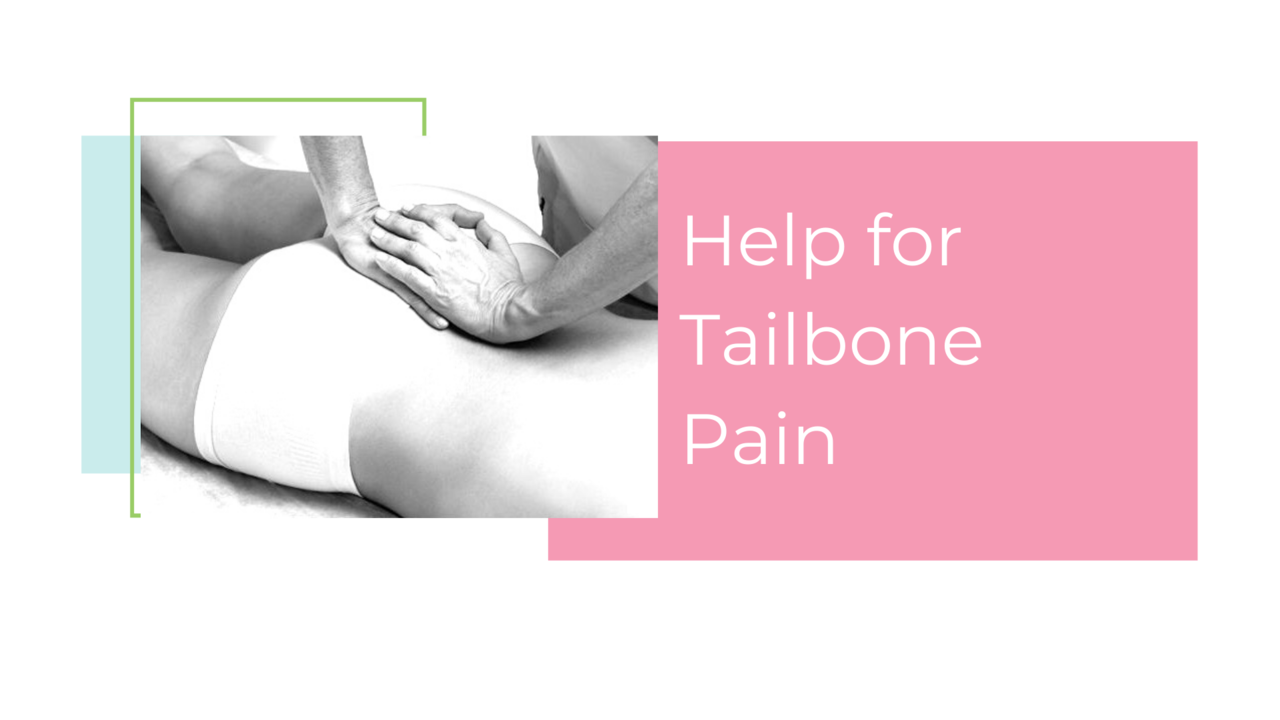
Help For Tailbone Pain
Jun 07, 2021A common complaint from my clients - especially those who have had children and who sit all day is - what can I do to relieve my tailbone pain?
Tailbone pain can happen for many reasons and is often closely tied to tension in the back part of the pelvic floor muscles. Tension can develop from sitting with a tucked pelvis, standing with a tucked pelvis, lack of core strength, injuries and more.
Often by releasing the tight, stuck muscles, it can relieve the tailbone pain (and improve core strength too!)
Women who are dealing with tailbone pain may often find that their pelvic floor and core are weak, and they may feel the need to do Kegels. I am a firm believer in kegels; however, they need to be done correctly and consistently, and sometimes it is better to focus on the release part of a kegel than on the contract/lift part of a kegel. This is especially true for people with tailbone pain.
When women do kegels, it is common for them to tighten their glutes or tuck their pelvis thinking they are doing kegels. When you do kegels without releasing the stuck tension, they won't be as effective because the muscles are being asked to contract from an already contracted, shortened state. This is a big reason why some women think that kegels don't work. They need to work on releasing the clenching and gripping first to allow the muscles to find their optimal resting length in neutral again and then add in kegels.
I'm going to go through an exercise that I give to pretty much 100% of my clients - especially those with tailbone pain.
It's an exercise to release tension in the posterior part of the pelvic floor, so for people who do a lot of sitting during the day, for people who maybe stand or sit with less than ideal posture, this can be a really good release for the muscles around the tailbone and can make it easier for us to maintain neutral pelvis throughout the day and also let go of a bit of tension that may be causing some pain.
Find a small ball - you can use a tennis ball. I like yoga tune-up balls for their size, density and grippiness. For some, if you have really, really tight muscles, you may want to start with something softer like a miracle method ball or a Franklin method ball.
Sit on a hard surface chair and place the ball in between the sitz bone and the anus – not on the bone or on the anus – just off to the side.
Allow your muscles to relax – think of your butt muscles like melting chocolate and the ball like a strawberry. Can you melt the chocolate over the strawberry? This is harder than it sounds. Trying to relax when you feel tension or pain can be challenging. You may need to start with a softer ball or even with no ball and try the visualization.
You can imagine a jellyfish floating, or an ice cream melting, your sitz bones gliding apart, your butt cheeks blossoming - anything that will allow you to think of softening and letting go and releasing any tension.
Bring attention to the front of your pelvis, to the perineum, to the glutes, the inner thighs - anything in and around the pelvis that's holding onto tension; you want to let it go and soften.
I recommend doing this in a warm room. You want to make sure you don't have any distractions, so turn your phone off. Ideally, your kids are not going to come in and ask for some help. Take some time for yourself and really connect with what's happening in your body so that you can soften, you can let go, and so you can release all that tension.
It may take 30 seconds. It may take 60 seconds. You can stay there for a couple of minutes if you want. Beyond that, it gets to be a little bit too much. Once you've done one side, take it out and now notice what has changed from one side to the other.
You may feel more space on the side you just released. You may feel the surface of the chair differently. You may feel like your butt cheeks are flatter.
The reason why you want to notice the change is that if you do one side and then immediately go to the other, it will balance out again, and it will feel kind of the same as it did before, and you won't necessarily sense what has changed. To really connect with what's going on in your body, make sure that you take a chance to sense that change. So, find your sitz bones. Sit back down, connect and then release.
You can find more incredible release exercises and relief for your tailbone pain in my Buff Muff App.
The Buff Muff App will teach you how to activate your pelvic floor appropriately and then add it to movement. I always suggest starting with the 28-Day Buff Muff Challenge, and you will be a part of a community where you can ask questions and seek support.
Start Your Free Trial Today
Another article you may find interesting:




